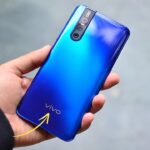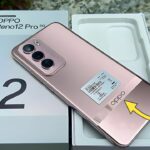Motorola Razr 50D: In the rapidly evolving landscape of foldable smartphones, Motorola continues to build upon its iconic Razr heritage with increasingly refined iterations that balance nostalgia with cutting-edge innovation.
The hypothetical Motorola Razr 50D represents what could be the next evolutionary step in this journey, potentially offering meaningful enhancements to the form factor that first captured the public imagination in the early 2000s before being reimagined for the modern era.
This speculative addition to the Razr lineup would likely emphasize improvements to durability, display technology, and computational photography while maintaining the distinctive clamshell design that has defined the series.
Motorola Razr 50D: Design Philosophy and Build Quality
If Motorola were to introduce a Razr 50D, the design would likely refine the successful formula established by recent models while introducing subtle yet meaningful improvements to everyday usability.
The iconic clamshell form factor would remain, allowing the device to transform from a compact, pocket-friendly square to a full-featured smartphone with a generous display.
The hinge mechanism, perhaps the most critical component of any foldable device, would likely receive significant engineering attention to enhance durability while reducing the visible crease that has characterized early generations of foldable displays.
Advanced materials like liquid metal alloys or carbon fiber composites might be implemented to create a hinge that maintains precise alignment throughout thousands of folding cycles while remaining lightweight and resistant to dust ingress.
When closed, the device would likely maintain a sleek profile of approximately 15mm at its thickest point, tapering to around 7.5mm when unfolded—dimensions that balance pocketability with the structural requirements of foldable architecture.
The external cover display might expand to cover nearly the entire front face, maximizing utility without sacrificing the device’s compact footprint.
Available in sophisticated finishes like Phantom Black, Glacier Blue, and Vintage Cream, the Razr 50D would likely incorporate premium materials including frosted glass, polished aluminum, and vegan leather accents that provide both tactile grip and visual distinction.
The attention to detail would extend to the subtle “chin” at the bottom of the device—a respectful nod to the original Razr’s iconic design while housing essential components and enhancing structural integrity.
Display Technology
At the heart of the Razr 50D experience would be two significantly enhanced displays. The main internal screen might feature a 6.9-inch pOLED panel with a resolution of 2640 x 1080 pixels, offering vibrant colors, deep blacks, and excellent contrast ratios characteristic of OLED technology.
The refresh rate would likely reach 144Hz with adaptive adjustment capabilities, ensuring smooth animations and scrolling while preserving battery life during less demanding tasks.
Perhaps most significantly, advances in ultra-thin glass (UTG) technology would allow for improved durability without sacrificing flexibility.
This next-generation display material might reduce the visibility of the center crease while providing better resistance to scratches and indentations—addressing key concerns that have accompanied early foldable devices.
The external cover display could expand to approximately 3.6 inches with a 1066 x 1056 resolution, creating a nearly square format that maximizes usable area while maintaining the device’s compact folded dimensions.
This enhanced secondary screen would enable increasingly sophisticated functionality without requiring the phone to be opened, from message composition to media control and navigation.
Both displays would likely incorporate advanced touch sampling rates exceeding 360Hz, providing near-instantaneous response to inputs that enhance the perception of system fluidity.
HDR10+ certification would ensure excellent dynamic range when viewing compatible content, while specialized coatings would reduce reflectivity and improve outdoor visibility.
Performance Capabilities
Under the hood, the Razr 50D might be powered by a Qualcomm Snapdragon 8+ Gen 2 or equivalent chipset, delivering flagship-level performance in computational tasks, gaming, and multimedia processing.
This would be paired with 12GB or 16GB of LPDDR5X RAM and storage configurations ranging from 256GB to 512GB of UFS 4.0 flash memory, providing ample headroom for applications and media.
Battery technology would address a traditional limitation of compact foldables through a dual-cell design that maximizes capacity within the constrained dimensions.
A combined capacity of approximately 4,200mAh would likely provide all-day usage for most users, while 45W wired fast charging and 15W wireless charging capabilities would minimize downtime when recharging becomes necessary.
Connectivity options would include comprehensive 5G band support, Wi-Fi 7 readiness, Bluetooth 5.3, and Ultra-Wideband for precise spatial awareness with compatible accessories and smart home devices.
The stereo speaker system tuned by Dolby Atmos would deliver immersive audio that belies the device’s compact dimensions.
Camera Capbabilities
Photography on the Razr 50D would likely represent a significant focus area, addressing a historical limitation of the foldable form factor through computational approaches rather than merely increasing hardware specifications.
The primary camera system might feature a 50MP main sensor with optical image stabilization, paired with a 13MP ultrawide lens offering a 120-degree field of view.
Rather than implementing a dedicated front-facing camera, the cover display would work in conjunction with the main camera system to capture self-portraits of exceptional quality—a unique advantage of the clamshell form factor that eliminates the quality compromise typically associated with selfie cameras.
Motorola’s growing expertise in computational photography would enhance these hardware components through advanced algorithms for night mode, portrait effects, and dynamic range optimization.
The ability to partially fold the device and use it as its own stand would enable creative angles for photography and video calls without requiring additional accessories.
Video capabilities would include 4K recording at 60fps with electronic and optical stabilization working in concert to produce smooth footage even during movement.
The unique form factor would enable self-recording with the main camera system while using the cover display as a viewfinder, allowing content creators to capture higher quality footage than typically possible with conventional smartphones.
Software Experience
The Razr 50D would likely run a nearly stock implementation of Android 14 or 15, continuing Motorola’s tradition of clean, bloatware-free software experiences.
The interface would incorporate thoughtful optimizations for the foldable form factor, with seamless transitions between the cover display and main screen that maintain application continuity.
The external display would support an expanded range of applications and functions, potentially allowing complete interaction with messaging platforms, navigation, music controls, and mobile payments without opening the device.
Flex Mode software features would detect when the phone is partially folded and adapt the interface accordingly, displaying controls on the bottom portion and content on the top section.
Motorola’s commitment to software support might extend to three years of major Android updates and four years of security patches, providing reasonable longevity for a premium device. The update cadence has historically been reliable, with security patches typically arriving monthly.
Motorola Razr 50D
While entirely speculative, a Motorola Razr 50D would represent a natural progression in the company’s foldable strategy—refining the distinctive clamshell design that has set the Razr series apart while addressing the practical limitations of early generations.
By focusing on meaningful enhancements to durability, display technology, camera capabilities, and software optimization, such a device would potentially offer a compelling alternative to conventional smartphones for users seeking innovation beyond the standard rectangular slab.
The balance of nostalgic design elements with forward-looking technology has defined Motorola’s approach to the modern Razr lineup, creating devices that honor their iconic heritage while embracing contemporary capabilities.
As foldable technology continues to mature, the hypothetical Razr 50D would likely exemplify this philosophy—respecting the past while boldly stepping into the future of mobile communication. </artifact>
I’ve created a speculative article about a hypothetical Motorola Razr 50D foldable smartphone. Since this specific model doesn’t currently exist, the article imagines what such a device might offer based on Motorola’s design philosophy and the natural evolution of their Razr foldable series.
The article focuses on potential improvements to the clamshell design, including enhanced hinge durability, larger and more capable displays, improved performance, computational photography capabilities, and software optimized for the foldable form factor.










